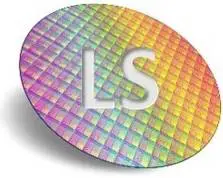Signs That You Need a Stepper Projection Lens Replacement

Stepper projection lenses are critical components in photolithography systems used in semiconductor manufacturing. Over time, stepper projection lenses may experience wear and degradation, affecting the quality and accuracy of semiconductor production.
This blog will explore the signs that indicate it’s time for a stepper projection lens replacement and the importance of maintaining optimal lens performance in semiconductor manufacturing.
Understanding Stepper Projection Lenses
Stepper projection lenses are optical components used in photolithography systems to transfer intricate patterns onto semiconductor wafers. These lenses project ultraviolet (UV) light through a series of masks or reticles onto the wafer surface, enabling the precise replication of microscopic features essential for semiconductor device fabrication.
Stepper projection lenses must maintain high levels of resolution, contrast, and accuracy to ensure the production of defect-free semiconductor devices with nanometer-scale precision.
Signs That It’s Time for a Stepper Projection Lens Replacement
Decreased Image Quality
One apparent sign that a stepper projection lens requires replacement is a noticeable decline in image quality, such as reduced resolution, blurring, distortion, or aberrations in projected images.
Poor image quality can compromise the integrity of semiconductor patterns and lead to defects in device fabrication.
Increased Defect Rates
As stepper projection lenses degrade, semiconductor manufacturers may observe an uptick in defect rates during the fabrication process. Defects, such as line-width variations, pattern shifts, or missing features, can indicate issues with lens performance and signal the need for replacement. Higher defect rates can lead to yield losses and impact overall production efficiency.
Inconsistent Performance
Stepper projection lenses should exhibit consistent performance across multiple exposures to ensure uniformity and repeatability in semiconductor manufacturing.
If manufacturers observe variations in image fidelity, exposure uniformity, or pattern alignment between different wafer lots or exposures, it may indicate problems with lens stability and necessitate replacement.
Increased Maintenance Requirements
As stepper projection lenses age, they may require more frequent maintenance and calibration to maintain optimal performance. Manufacturers may notice an increase in downtime, service calls, or adjustments needed to address issues, such as focus drift, illumination uniformity, or lens cleaning.
Rising maintenance demands can impact production schedules and increase operational costs.
Compatibility Issues
Advancements in semiconductor technology may require stepper projection lenses with specific performance characteristics, such as higher resolution, larger field sizes, or enhanced wavelength capabilities.
If existing lenses lack the capabilities needed to meet evolving manufacturing requirements, it may be necessary to invest in newer, more advanced lens technologies to remain competitive in the industry.
Importance of Stepper Projection Lens Replacement
Ensuring the timely replacement of stepper projection lenses is crucial for maintaining the quality, precision, and efficiency of semiconductor manufacturing processes. Failing to address degraded or obsolete lenses can have several negative consequences.
Compromised Product Quality
Deteriorating lens performance can lead to defects in semiconductor devices, resulting in reduced product yield, increased rework, and higher manufacturing costs.
Maintaining optimal lens quality is essential for producing high-quality, reliable semiconductor products that meet industry standards and customer requirements.
Decreased Productivity
Equipment downtime, maintenance activities, and production delays associated with degraded or obsolete lenses can disrupt manufacturing schedules, reduce throughput, and impact overall productivity.
Timely replacement of stepper projection lenses minimizes downtime, maximizes equipment uptime, and optimizes production efficiency.
Risk of Technological Obsolescence
Failure to upgrade outdated lenses to meet evolving technology requirements can result in competitive disadvantages, missed market opportunities, and diminished customer satisfaction.
Staying abreast of advancements in lens technology and investing in state-of-the-art replacements can position manufacturers for long-term success in the semiconductor industry.
By recognizing the signs of lens degradation, addressing performance issues proactively, and investing in advanced replacement technologies, semiconductor manufacturers can ensure the continued success and competitiveness of their operations.
Maintaining optimal lens performance is paramount for achieving defect-free semiconductor products with nanometer-scale precision and reliability. Contact us at Lithography Solutions for your replacement needs.
